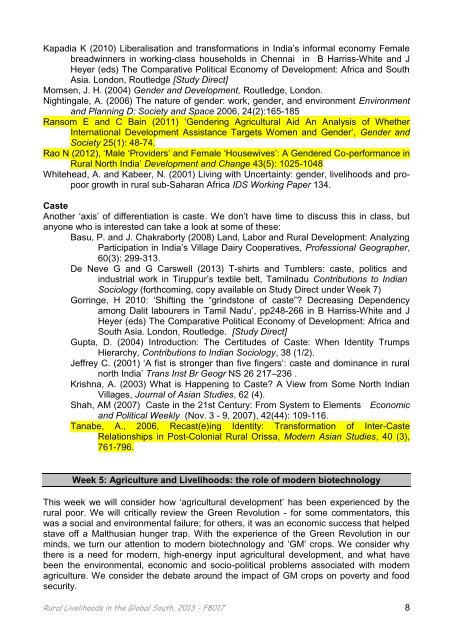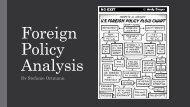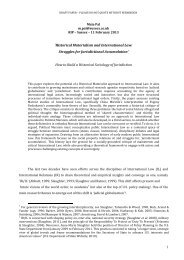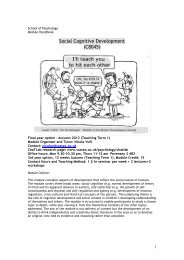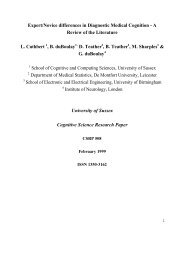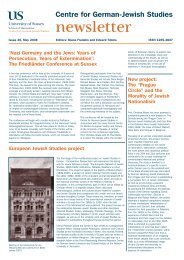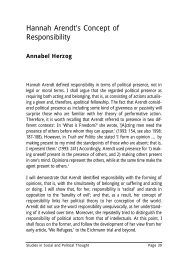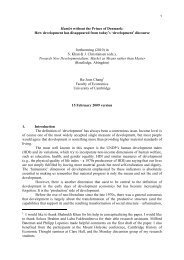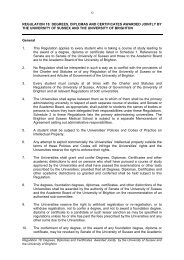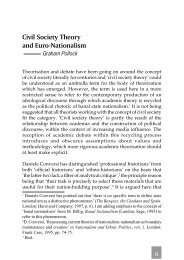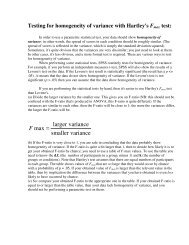rural livelihoods in the global south (f8017s) - University of Sussex
rural livelihoods in the global south (f8017s) - University of Sussex
rural livelihoods in the global south (f8017s) - University of Sussex
You also want an ePaper? Increase the reach of your titles
YUMPU automatically turns print PDFs into web optimized ePapers that Google loves.
Kapadia K (2010) Liberalisation and transformations <strong>in</strong> India’s <strong>in</strong>formal economy Female<br />
breadw<strong>in</strong>ners <strong>in</strong> work<strong>in</strong>g-class households <strong>in</strong> Chennai <strong>in</strong> B Harriss-White and J<br />
Heyer (eds) The Comparative Political Economy <strong>of</strong> Development: Africa and South<br />
Asia. London, Routledge [Study Direct]<br />
Momsen, J. H. (2004) Gender and Development, Routledge, London.<br />
Night<strong>in</strong>gale, A. (2006) The nature <strong>of</strong> gender: work, gender, and environment Environment<br />
and Plann<strong>in</strong>g D: Society and Space 2006, 24(2):165-185<br />
Ransom E and C Ba<strong>in</strong> (2011) ‘Gender<strong>in</strong>g Agricultural Aid An Analysis <strong>of</strong> Whe<strong>the</strong>r<br />
International Development Assistance Targets Women and Gender’, Gender and<br />
Society 25(1): 48-74.<br />
Rao N (2012), ‘Male ‘Providers’ and Female ‘Housewives’: A Gendered Co-performance <strong>in</strong><br />
Rural North India’ Development and Change 43(5): 1025-1048<br />
Whitehead, A. and Kabeer, N. (2001) Liv<strong>in</strong>g with Uncerta<strong>in</strong>ty: gender, <strong>livelihoods</strong> and propoor<br />
growth <strong>in</strong> <strong>rural</strong> sub-Saharan Africa IDS Work<strong>in</strong>g Paper 134.<br />
Caste<br />
Ano<strong>the</strong>r ‘axis’ <strong>of</strong> differentiation is caste. We don’t have time to discuss this <strong>in</strong> class, but<br />
anyone who is <strong>in</strong>terested can take a look at some <strong>of</strong> <strong>the</strong>se:<br />
Basu, P. and J. Chakraborty (2008) Land, Labor and Rural Development: Analyz<strong>in</strong>g<br />
Participation <strong>in</strong> India’s Village Dairy Cooperatives, Pr<strong>of</strong>essional Geographer,<br />
60(3): 299-313.<br />
De Neve G and G Carswell (2013) T-shirts and Tumblers: caste, politics and<br />
<strong>in</strong>dustrial work <strong>in</strong> Tiruppur’s textile belt, Tamilnadu Contributions to Indian<br />
Sociology (forthcom<strong>in</strong>g, copy available on Study Direct under Week 7)<br />
Gorr<strong>in</strong>ge, H 2010: ‘Shift<strong>in</strong>g <strong>the</strong> “gr<strong>in</strong>dstone <strong>of</strong> caste”? Decreas<strong>in</strong>g Dependency<br />
among Dalit labourers <strong>in</strong> Tamil Nadu’, pp248-266 <strong>in</strong> B Harriss-White and J<br />
Heyer (eds) The Comparative Political Economy <strong>of</strong> Development: Africa and<br />
South Asia. London, Routledge. [Study Direct]<br />
Gupta, D. (2004) Introduction: The Certitudes <strong>of</strong> Caste: When Identity Trumps<br />
Hierarchy, Contributions to Indian Sociology, 38 (1/2).<br />
Jeffrey C. (2001) ‘A fist is stronger than five f<strong>in</strong>gers’: caste and dom<strong>in</strong>ance <strong>in</strong> <strong>rural</strong><br />
north India’ Trans Inst Br Geogr NS 26 217–236 .<br />
Krishna, A. (2003) What is Happen<strong>in</strong>g to Caste? A View from Some North Indian<br />
Villages, Journal <strong>of</strong> Asian Studies, 62 (4).<br />
Shah, AM (2007) Caste <strong>in</strong> <strong>the</strong> 21st Century: From System to Elements Economic<br />
and Political Weekly (Nov. 3 - 9, 2007), 42(44): 109-116.<br />
Tanabe, A., 2006, Recast(e)<strong>in</strong>g Identity: Transformation <strong>of</strong> Inter-Caste<br />
Relationships <strong>in</strong> Post-Colonial Rural Orissa, Modern Asian Studies, 40 (3),<br />
761-796.<br />
Week 5: Agriculture and Livelihoods: <strong>the</strong> role <strong>of</strong> modern biotechnology<br />
This week we will consider how ‘agricultural development’ has been experienced by <strong>the</strong><br />
<strong>rural</strong> poor. We will critically review <strong>the</strong> Green Revolution - for some commentators, this<br />
was a social and environmental failure; for o<strong>the</strong>rs, it was an economic success that helped<br />
stave <strong>of</strong>f a Malthusian hunger trap. With <strong>the</strong> experience <strong>of</strong> <strong>the</strong> Green Revolution <strong>in</strong> our<br />
m<strong>in</strong>ds, we turn our attention to modern biotechnology and ‘GM’ crops. We consider why<br />
<strong>the</strong>re is a need for modern, high-energy <strong>in</strong>put agricultural development, and what have<br />
been <strong>the</strong> environmental, economic and socio-political problems associated with modern<br />
agriculture. We consider <strong>the</strong> debate around <strong>the</strong> impact <strong>of</strong> GM crops on poverty and food<br />
security.<br />
Rural Livelihoods <strong>in</strong> <strong>the</strong> Global South, 2013 - F8017 8


